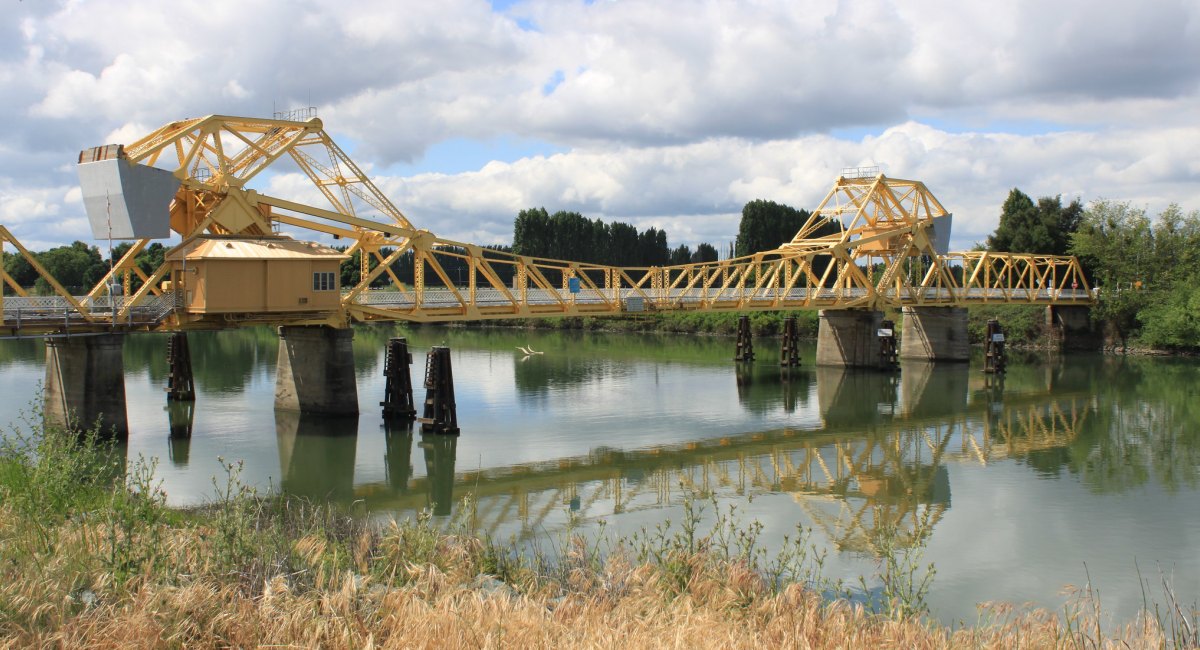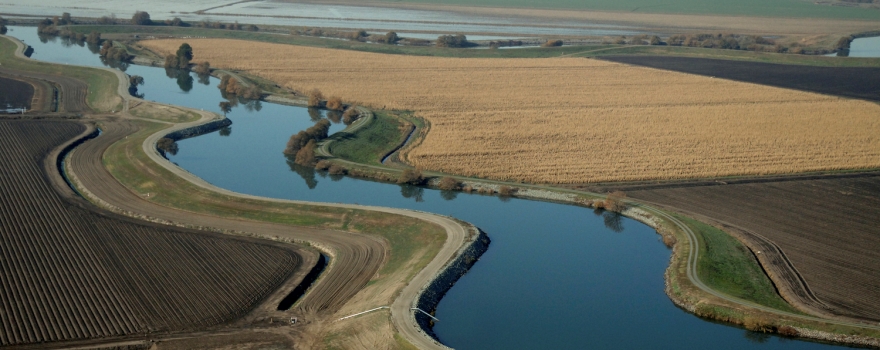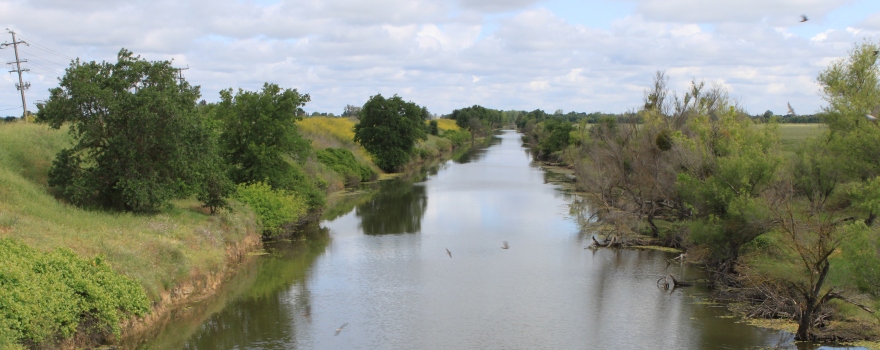Developed by the Delta Stewardship Council, the Delta Plan is the state’s comprehensive, long-term management plan for the Delta to further the coequal goals.
This page last updated on 3/28/2021.
 The Delta Plan is California’s long-term comprehensive plan for managing the water and environmental resources of the Delta as well as dealing with the multiple stressors that impact its ecosystem. Fundamentally different than any previous attempt to solve the Delta’s myriad of problems, the Delta Plan represents a new era in governing the Delta by setting a legally-enforceable path forward – both for the Delta and for the state.
The Delta Plan is California’s long-term comprehensive plan for managing the water and environmental resources of the Delta as well as dealing with the multiple stressors that impact its ecosystem. Fundamentally different than any previous attempt to solve the Delta’s myriad of problems, the Delta Plan represents a new era in governing the Delta by setting a legally-enforceable path forward – both for the Delta and for the state.
Coequal Goals and the Delta Stewardship Council
The Delta Reform Act of 2009 defined the coequal goals of providing a more reliable water supply and protecting, restoring and enhancing the Delta ecosystem as overarching state policy; the legislation also specified that the coequal goals shall be achieved in a manner that protects and enhances the Delta as an evolving place. In addition, the Act set a state policy of requiring reduced reliance on the Delta through a statewide strategy of improved regional supplies, conservation, and water use efficiency.  In order to facilitate coordination across multiple entities with responsibilities in the Delta, the Delta Reform Act created the Delta Stewardship Council as an independent state agency directed it to develop, adopt and implement a Delta Plan that furthers the coequal goals.
In order to facilitate coordination across multiple entities with responsibilities in the Delta, the Delta Reform Act created the Delta Stewardship Council as an independent state agency directed it to develop, adopt and implement a Delta Plan that furthers the coequal goals.
The Council is comprised of seven members which are intended to have diverse expertise and reflect a statewide perspective. The Governor appoints four members, the state Senate and Assembly each appoint one member, and the seventh is the chair of the Delta Protection Commission. Click here for a list of current members of the Council.
Recognizing the importance of science to effective management of the Delta, the Act also established the Delta Independent Science Board and mandated the use of ‘best available science’ and ‘adaptive management’ in the Delta Plan, as well as activities that occur under the Plan. The 10-member Delta Independent Science Board is a panel of nationally and internationally recognized scientists that provide oversight of scientific research, monitoring and assessment of programs underway by conducting periodic reviews of these program and advising the Council. Members of the Delta ISB are appointed by the Council for five-year terms. For more on the Delta Independent Science Board, click here.
The Delta Plan
The first iteration of the Delta Plan was adopted in May of 2013. The Plan contained 14 regulatory policies with which State and local agencies are required to comply; any plan, project or program that meets the criteria of being a ‘covered action’ as specified in the Delta Reform Act will be subject to the Delta Plan’s legally enforceable regulations. The first Delta Plan also specified 73 non-regulatory recommendations that identify interconnected actions essential to achieving the coequal goals.
Key objectives of the Delta Plan include reducing reliance on the Delta, successful completion of the Bay Delta Conservation Plan, updating Delta water quality standards, addressing multiple Delta stressors, and protecting the Delta as a unique place. The Delta Plan’s policies and recommendations address emergency preparedness in the Delta, flood risk reductions and priorities for state investments in levee maintenance and improvements.
The regulatory policies were subsequently approved by the Office of Administrative Law and became legally enforceable on September 1, 2013. Implementation of the plan began in April of 2014 with the first meeting of the Delta Plan Interagency Implementation Committee, a committee comprised of federal and state officials who lead the agencies responsible for implementation of the plan’s policies and recommendations. Click here to read the Delta Plan.
The Delta Plan’s regulatory authority: Covered actions
 The Delta Reform Act requires State and local actions that fit the legal definition of a covered action to be consistent with the policies included in the Delta Plan. The legislation defines a covered action as a plan, program or project that meets all of the following conditions:
The Delta Reform Act requires State and local actions that fit the legal definition of a covered action to be consistent with the policies included in the Delta Plan. The legislation defines a covered action as a plan, program or project that meets all of the following conditions:
-
- Will occur, in whole or in part, within the boundaries of the Delta or Suisun Marsh;
- Will be carried out, approved, or funded by the state or a local public agency;
- Is covered by one or more provisions of the DeltaPlan;
- Will have a significant impact on the achievement of one or both of the coequal goals or the implementation of government-sponsored flood control programs to reduce risks to people, property, and state interests in the Delta.
If those criteria apply, then the last thing to determine is if the proposed action covered by one or more Delta Plan policies. If the proposed action is covered by at least one Delta Plan regulatory policy, then the proposed action is considered a covered action; if the proposed action is not covered by any Delta Plan regulatory policy, it is not a covered action.
Also, ministerial projects, “emergency” projects exempted from CEQA, and temporary water transfers of up to 1 year in duration are not considered covered actions.
Certifying consistency with the Delta Plan
The Delta Reform Act requires any State or local agency proposing to carry out, approve, or fund a plan, program, or project that meets the criteria of a covered action must submit a written certification of consistency to the Council with detailed findings as to whether the covered action is consistent with the Delta Plan. That determination must be reasonable, made in good faith, and consistent with the Delta Reform Act and relevant provisions of the Delta Plan.
If an agency determines that a proposed plan, program, or project is not a covered action, that determination is not subject to Council regulatory review, but is subject to judicial review as to whether it was reasonable, made in good faith, and is consistent with the Delta Reform Act and relevant provisions of the Delta Plan.
Appealing a consistency determination
Any person – be it a Council member, an agency, or a member of the public – who believes a covered action is inconsistent with the Delta Plan and will impact the achievement of one or both of the coequal goals may appeal a certification of consistency to the Council within 30 days after the submission of the certification of consistency. If there are no appeals, the state or local public agency may proceed to implement the covered action.
If a consistency determination is appealed, the appeal paperwork must clearly state the basis for the claim that the covered action is inconsistent with the Delta Plan. The Council or its executive officer may request further information. The Council will issue a preliminary determination and schedule a public hearing. The appellant, the state or local agency, the Delta Protection Commission, or any other person may testify before the council regarding an appeal, either orally or in writing.
The council shall make its decision on the appeal within 60 days of hearing the appeal, and shall make specific written findings defining the covered action under review and either denying the appeal or remanding the matter to the state or local public agency for reconsideration of the covered action based on the finding that the certification of consistency is not supported by substantial evidence in the record. Click here to learn more about covered actions and the appeals process.
Updating and amending the Delta Plan
The Delta Reform Act requires that the Delta Plan be reviewed and updated at least every five years; however, the Delta Plan anticipated that the Plan would need to be reviewed and updated more frequently, and thus outlined a process for amending in response to changing circumstances and conditions in the Delta. Since its adoption in 2013, the Delta Plan has been amended at least four times, including amendments adopting new and refined performance measures in 2016 and further refining them in 2018; an amendment to exempt single-year transfers as a covered action; an amendment to address conveyance, storage, and operations; and an amendment to adopt the Delta Levees Investment Strategy. An amendment to Chapter 4 of the Delta Plan (Protect, Restore, and Enhance the Delta Ecosystem) is currently under consideration by the Council, to address a fundamental shift in how conservation is being planned and implemented in the Delta. To learn more about amendments to the Delta Plan, click here.
Click here for the Delta Plan.
Click here to return to the Delta and Statewide Planning Processes main page.





